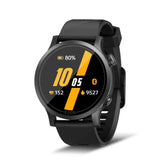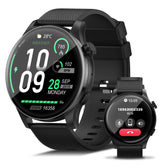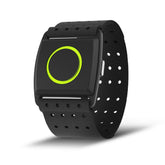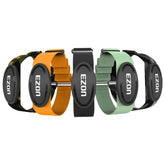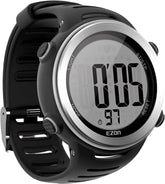スポーツウォッチのデュアルバンド GPS テクノロジーの魔法を解明
スポーツウォッチのデュアルバンド GPS テクノロジーの魔法を解明

スポーツとフィットネスのダイナミックな世界では、アスリートや愛好家に正確で信頼性の高いデータを提供するために、テクノロジーが絶えず進化しています。スポーツウォッチ業界に大きな波紋を呼んでいる驚異的なテクノロジーの 1 つが、デュアルバンド GPS テクノロジーです。
デュアルバンド GPS とは何ですか?
GPS (全地球測位システム) は、長い間スポーツウォッチの定番であり、ランニング、ハイキング、サイクリングを追跡するのに役立っています。従来の GPS システムは単一の周波数で動作します。ただし、デュアルバンド GPS は、その名前が示すように、2 つの異なる周波数を同時に使用します。これらの周波数は通常、GPS スペクトルの L1 バンドと L5 バンドです。
L1 バンドは、シングルバンド GPS デバイスでより一般的に使用されている周波数です。これは長い間使用されており、一般的なナビゲーションに最適です。しかし、特に厳しい環境では限界があります。ここで L5 バンドの出番です。L5 バンドはより高い周波数で動作し、いくつかの重要な利点があります。帯域幅が広いため、より多くのデータを伝送でき、建物、木、その他の障害物による干渉の影響を受けにくくなります。
デュアルバンド GPS はどのように機能しますか?
デュアルバンド GPS ウォッチには、L1 バンドと L5 バンドの両方から信号を受信できる高度な受信機が搭載されています。高層ビルが立ち並ぶ街や深い森の中をランニングしているとき、ウォッチはこれら 2 つのバンドからのデータを組み合わせます。複雑なアルゴリズムを使用して信号を分析します。L1 信号がブロックされたり歪んだりしている場合、ウォッチは L5 信号に頼って位置を正確に計算できます。2 つの異なる周波数を使用して三角測量を行うこのプロセスにより、位置追跡のエラーが大幅に減少します。
スポーツウォッチにおけるデュアルバンドGPSの利点
-
精度の向上
- ランナーにとって、これはより正確な距離とペースの計算を意味します。[評判の良いスポーツ技術研究機関を挿入] による調査では、デュアルバンド GPS 技術を搭載したスポーツウォッチを使用しているランナーは、シングルバンド GPS ウォッチを使用しているランナーと比較して、平均 3 ~ 5 メートルの精度向上が見られました。正確なペース設定はパフォーマンスに大きな違いをもたらす可能性があるため、これはレースに向けてトレーニングしているランナーにとって非常に重要です。
- ハイカーやアウトドア アドベンチャー愛好家にも大きなメリットがあります。デュアル バンド GPS は、山岳地帯や植物が密集した地域でもルートを正確に追跡できるため、迷子になることがありません。
-
より高速な信号取得
- スポーツウォッチが GPS 信号を受信するまで待ったことはありませんか? デュアルバンド GPS テクノロジーにより、このプロセスが高速化されます。2 つの周波数を使用できるため、より迅速に衛星にロックできます。つまり、イライラする遅延なしに、より早くトレーニングを開始できるのです。
-
厳しい環境でも優れたパフォーマンスを発揮
- 都市部では、高層ビルが信号の反射やマルチパス干渉を引き起こす可能性があるため、デュアルバンド GPS が威力を発揮します。デュアルバンド GPS は、こうした誤った信号をフィルタリングして、より正確な位置特定を提供します。同様に、電力線や通信塔の近くなど、電磁干渉が多いエリアでは、追加の L5 バンドが信号の整合性を維持するのに役立ちます。
デュアルバンド GPS の実際の使用例
Garmin の Forerunner 965 は、デュアルバンド GPS 技術を採用したスポーツウォッチの代表例です。ランナーたちは、市街地を走るとき、高層ビルの間を通過するときでも、このウォッチが正確にすべての方向を追跡していると報告しています。同じくデュアルバンド GPS を搭載した Wahoo ELEMNT ROAM を使用しているサイクリストは、特に森林地帯を走るときに、ルート追跡が大幅に改善されたことに気づいています。
結論
デュアルバンド GPS テクノロジーは、スポーツ ウォッチの世界に革命をもたらします。これまでは実現できなかったレベルの精度と信頼性を提供します。プロのアスリートでも、週末にスポーツを楽しむ人でも、デュアルバンド GPS 搭載のスポーツ ウォッチに投資することで、トレーニング体験が向上し、フィットネス目標をより効果的に達成し、アウトドア アドベンチャー中に軌道に乗ることができます。
